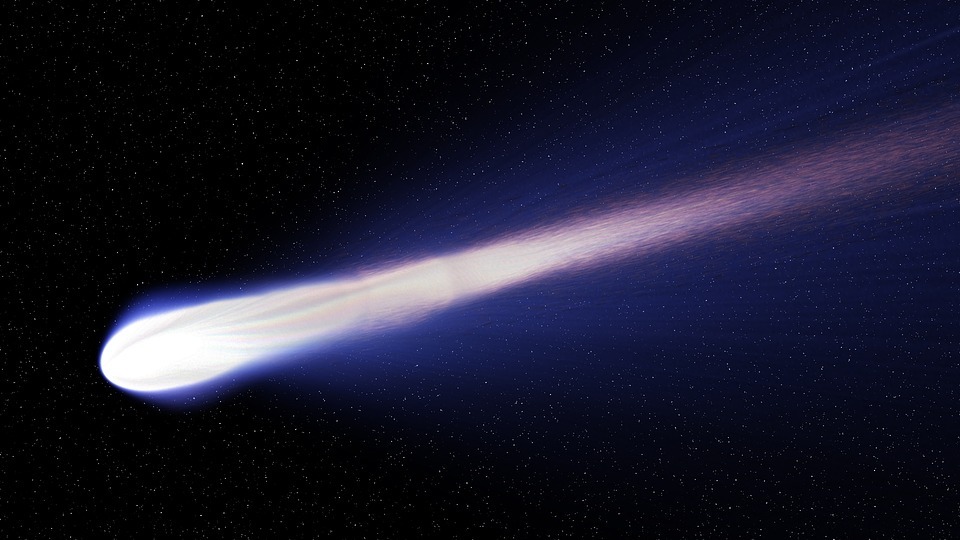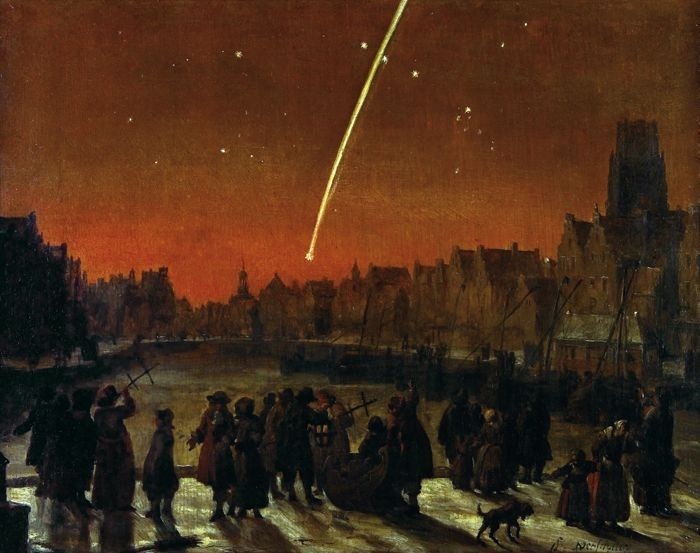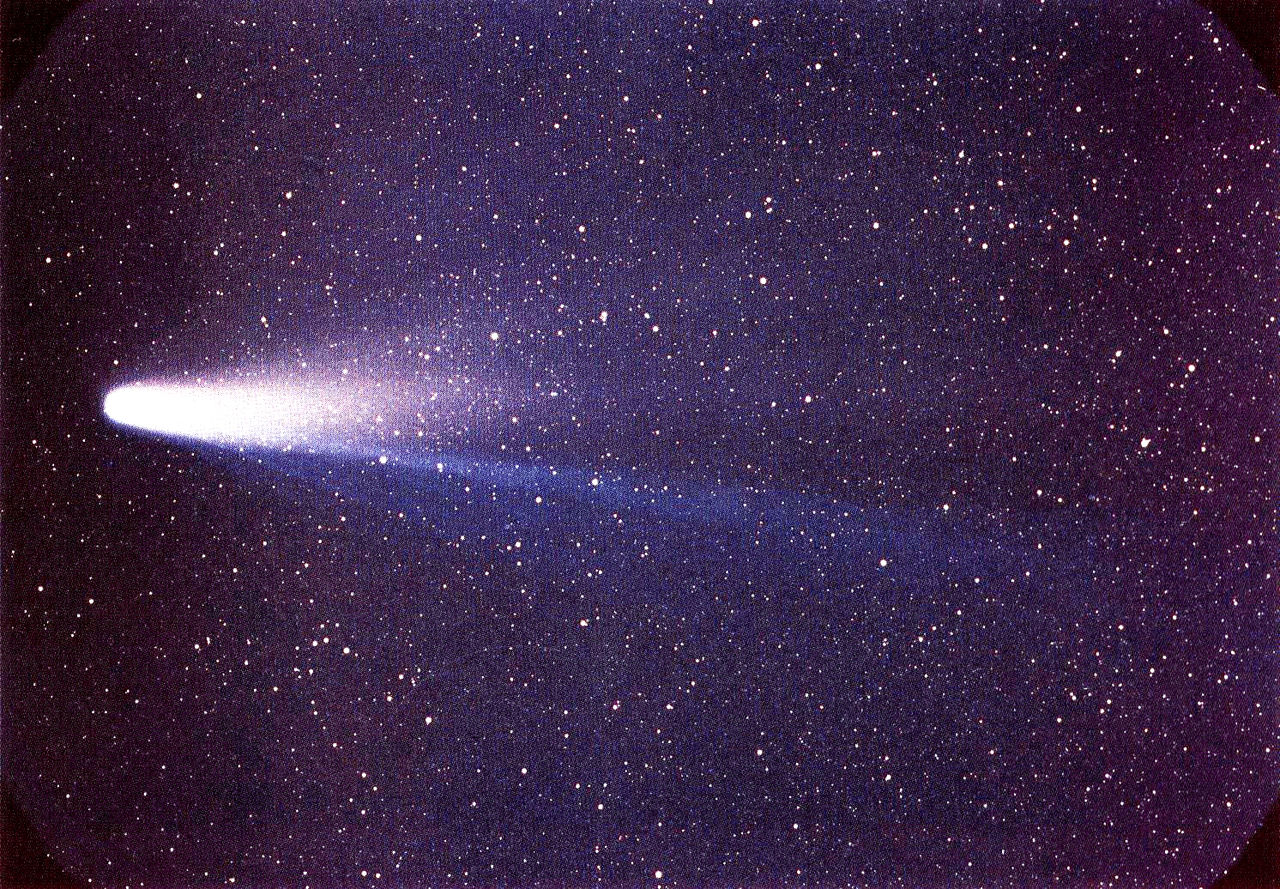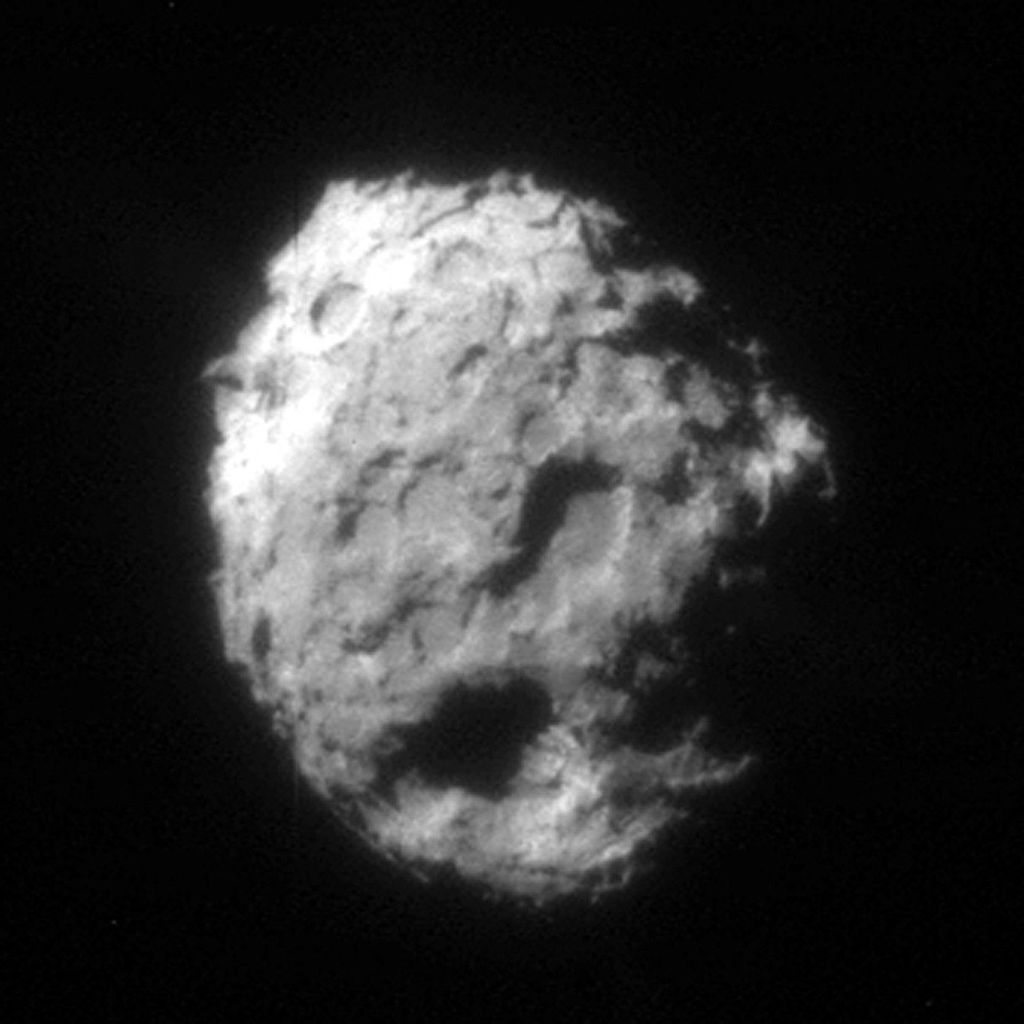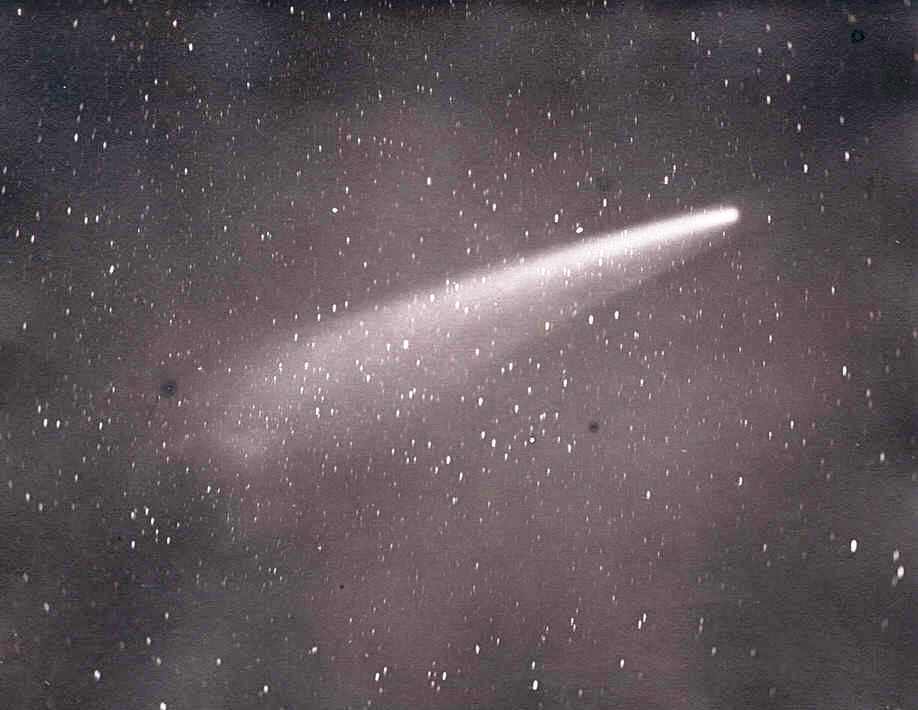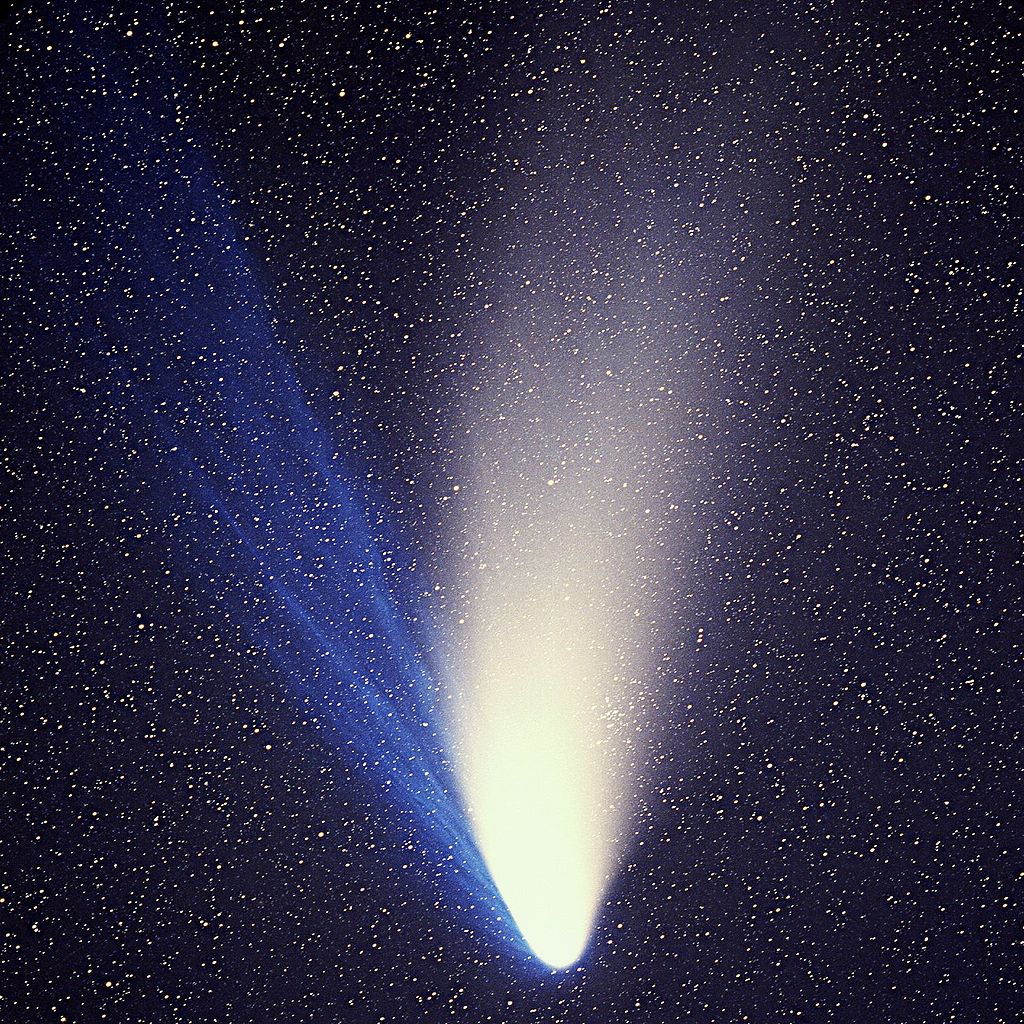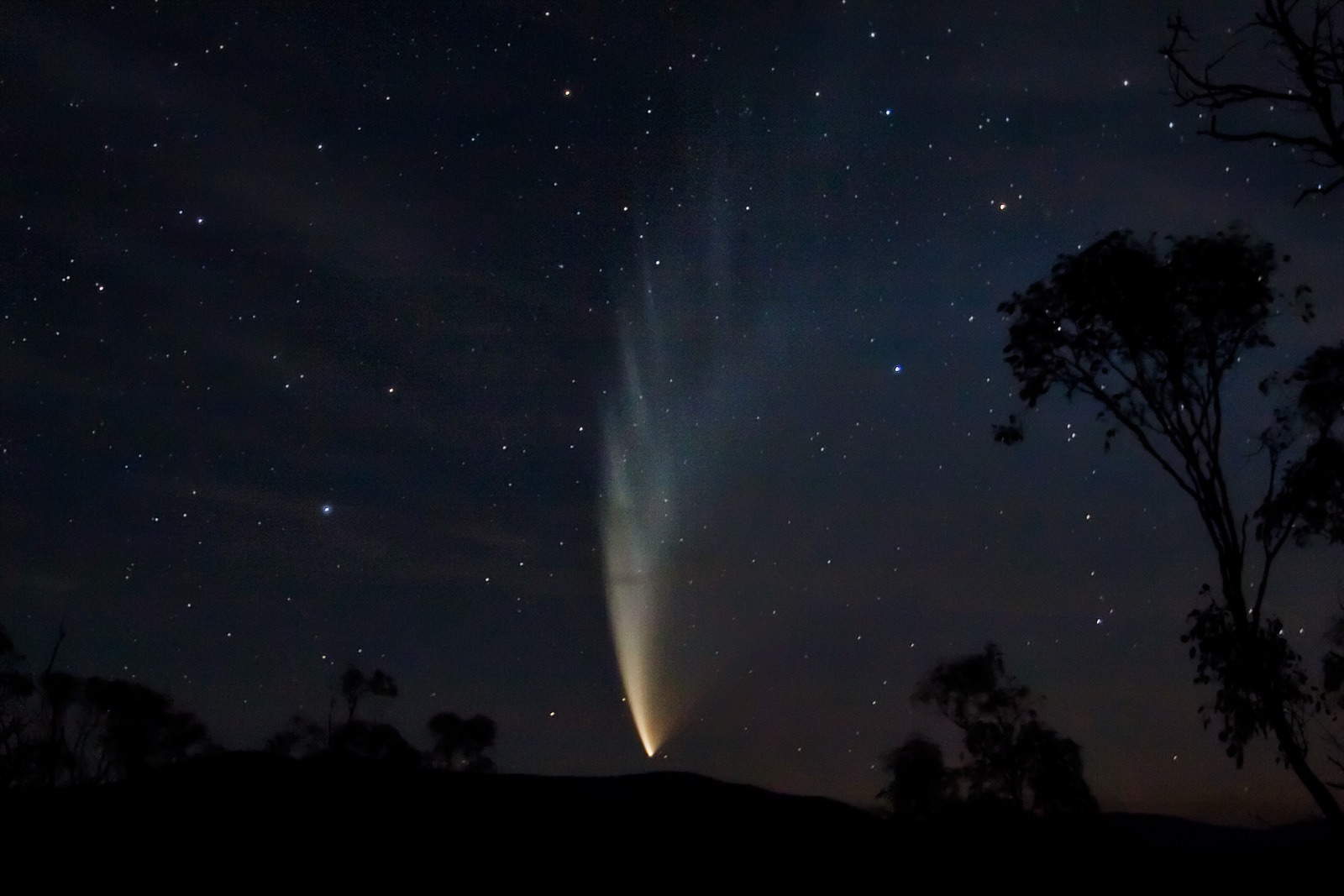Comets are celestial objects made of dust, ice, and other materials which orbit around the sun. However, they are different from planets because comets are just an object while planets are bodies that move around a particular star such as the sun and they are highly eccentric as well. Comets usually pass by the Earth every few years which is why they have become an important celestial object for study purposes.
The Top 10 Comets in Our Solar System
There are possibly millions of comets in our solar system, many of which are not even observable by the naked eye. However, few have been actively observed by many. The following are classified as the top 10 comets in our solar system.
The Great Comet of 1680
The Great Comet of 1680 is the most known and well-recognized comet in our solar system. The Great Comet of 1680 was discovered by a German Astronomer named Gottfried Kirsch. The primary reason why it is among the top 10 comets in our solar system is that it was the first telescopic comet discovery in history. Prior to that, astronomers had seen comets but not the ones which could be seen by a telescope only. The earliest visibility of this comet was on 14th November 1680 but more clear visibility was seen on December 4, 1680, when the comet was visible at magnitude +2 and had a tail of 15 degrees.
The comet was up there for quite a while and seen by many but accounted to Gottfried Kirsch for the first telescopic vision. Sources suggest that by the 18th of December, the comet arrived at the closest position to the sun with a distance of only 744,000 miles or 1.2 million kilometers. However, other sources suggest that this incident took place on the 7th of December. By the time this comet passed close to the sun, it could be seen passing above it. As of this point, it was reported that the tail of the comet stretched for over 70 degrees making it one of the biggest comet sightings of all time.
The comet stayed up in the air for almost 125 days and by February 1681, it completely faded away and could no longer be seen from the naked eye. The following pictorial illustration displays the sighting of this comet in our solar system. For its magnificent appearance, as well as first sight from a telescope, it is by far one of the top comets in our solar system.
Halley’s Comet
Halley’s Comet is the most famous comet in our solar system which is still alive and re-appears every 75 years. Comet Halley was discovered by a British astronomer named Edmund Halley. The comet got famous because Edmund Halley discovered it three times and reported that the comet will return in 1758. Although it was late, Halley’s prediction that the comet will return in 1758 became true when it was seen on 25th December 1758.
The comet used to appear multiple times and was recorded by astronomers since 240 BC. However, it was Edmund Halley who discovered that this is the same comet that appears periodically after 75 or 76 years. In 1986, the Halley’s Comet was first observed by a spacecraft in detail. This was done to study the comet in a better manner. The comet follows an oval orbital path with the sun. As far as its technical properties are concerned, it is 8 kilometers wide and 16 kilometers long.
One way in which you can see it twice is if you are born in 2000 and Halley’s Comet first passes in 2005 and then passes in 2080. By this time, your age will be 80 and that is probably one of the only ways in which you can see Halley’s Comet twice in your lifetime. The next known appearance of Halley’s Comet is expected to be in the middle of 2061. It will stay up close to Earth for a while after which it will disappear once again.
The Great Comet of 1744
One of the top comets in our solar system is The Great Comet of 1744 which is officially named C/1743 X1. This comet was first discovered in 1743 and 1744 by Jan de Munck, Dirk Klinkenberg, and Jean-Philippe de Chéseaux. However, Jan de Munck was the first one to discover it in late November 1743. Others discovered it in December of 1743. The Great Comet of 1744 was apparent to the naked eye for several months in 1744.
The display of this comet was spectacular which is why it became one of the most popular comets in our solar system. At first, the comet displayed dim lighting and appeared to be an object around the fourth magnitude. As it came to the perihelion, the comet got brighter and brighter. Unlike other comets, this comet had two tails around 27th February 1744. By this point, The Great Comet of 1744 came to a magnitude of -7 which made it visible during the daytime as well. The high magnitude also resulted in the name “The Great Comet ”. The comet was at 20.5 million miles from the sun when it came to the perihelion.
Some records suggest that by the morning of 6th March, there were six tails of this comet. It is also significant because the comet had an absolute magnitude of 0.5 which made it the sixth highest in history.
The Wild 2 Comet
The Wild 2 Comet has been significant to our solar system and the discovery of comets in many ways which is why it is one of the top 10 comets in our solar system. The Wild 2 was discovered by Paul Wild on 6th January 1978 with a 40-cm Schmidt telescope. Studies have shown that this comet has been up for 4.5 billion years and was surprisingly found with a small telescope. The official name of this comet is 81P/ Wild.
As far as the technical description of this comet is concerned, it has dimensions of 5.5 km × 4.0 km × 3.3 km with a density of 0.6 g per cubic centimeter. Earlier, the orbital period of this comet was 43 years but with rapid changes, it got down to 6 years only. The last perihelion was observed on July 20, 2016, when the comet reached its closest to the sun. The distance from the sun at this point was 1.592 Astronomical units. The next perihelion of Wild 2 Comet is expected to be around 15 December 2022.
Most recently, NASA launched the Stardust spacecraft to study this comet to evaluate its orbital schema as well as its material properties. This spacecraft brought back samples from this comet which made this the first comet which had its core material brought to Earth.
Shoemaker Levy-9
Another important comet in our solar system was the Shoemaker Levy-9 which had the distinctive factor of breaking into 21 different pieces. The comet was first discovered in the year 1993 by astronomers Carolyn Shoemaker and Eugene Shoemaker. David Levy also observed the comet in the same year. The official name of this comet was D/1993 F2 also known as SL9 in the short form of the full name.
The story behind this comet is quite interesting. It was captured by the planet Jupiter’s external atmosphere and gravitational pressure. It was orbiting around the planet in 1993 when it was first discovered. Sources suggest that this comet was actually captured by Jupiter somewhere between 1960 to 1970. In 1994, this comet collided with the planet Jupiter which was the first recorded event of a collision between celestial objects. The comet broke into 21 fragments. The entire collision was televised and was observed by astronomers all over the world.
There were many spacecraft up in space at that time which were able to catch photographs, make videos, and collect other forms of important data with regard to this collision. On Earth, the incident was observed from the Hubble Space Telescope. The explosion was huge and produced a fireball equivalent to the detonation of 6 million tons of TNT explosive.
The Great January Comet of 1910
The Great January Comet of 1910 is a comet that was discovered by many people simultaneously because it was visible to the naked eye when it was first noticed. The astronomers were not observing this comet before this first visual appearance. This comet is considered significant in space history because of its unexpected appearance as well as its brightness. This comet is still considered by many as the brightest comet of the 20th century, mainly because it gave a shine more than the planet Venus. The official name of this comet is “C/1910 A1”.
The Great January Comet of 1910 was spotted in the South African region on the 13th of January. One of the interesting stories about this comet is that many mistook it for the Halley’s Comet, which periodically appears after every 75 years. This comet was quite bright which is why it was visible in the daytime as well as the nighttime. However, the theory of Halley’s Comet was nullified when Halley’s Comet actually reappeared in the month of April 1910.
Robert T. A. Innes was the first astronomer to study The Great January Comet of 1910. The appearance of this comet was televised and reported in multiple media forms as well. The observation arc for this comet was 82 days and the perihelion of this comet was 19.292 million km or 0.12896 Astronomical Units. The long orbital period of this comet means that it will come again after 57,000 years.
Tempel Tuttle Comet
Tempel Tuttle Comet is another well-known comet in the field of astronomy. Wilhelm Tempel was the first person to discover this comet on 19th December 1865. A few days later, on 6th January 1866, it was also observed closely by Horace Parnell Tuttle. This is how the comet got its name as well. The official name of this comet is 55P/Tempel-Tuttle. Astronomers have made close estimates of this comet suggesting that it has a radius of 1.8 kilometers and a stream with a mass 5×1012.
The Temple Tuttle is not a comet of its own; rather it has been the parent body of a Leonid Meteor Shower. Sources suggest that this comet was spotted earliest in 1699 by Gottfried Kirch but was not considered a periodic comet. However, upon reaching the perihelion point in 1866, it was recognized by Tempel and Tuttle. The perihelion of this comet has been 0.9766 Astronomical Units.
One surprising thing about this comet is that it has a path of orbit quite close to the earth. Therefore, the periodic comet appears after every 33 years in the form of Leonid Meteor Showers. These were left behind many centuries ago but come across the path of Earth at a later time. In 2009, the Earth saw a meteor shower from this comet but that was from 1466 and 1533 Orbit. In 2042, 33 years after 2009, the meteor shower of this comet will reappear but from the orbits that occurred in the late 1500s or early 1600s.
Great Comet of 1882
The Great Comet of 1882 has been one of the brightest comets ever seen in space which is why it ranks among the top 10 comets in our solar system. This comet is a member of the Kreutz Sungrazing Group. Comets which are members of this group pass extremely close to the sun and are theoretically considered as fragments of a large comet that was broken down several centuries ago.
The comet was spotted by Italian sailors on 1st September 1882. Earlier, it was considered to be just another comet passing around. However, as it got closer to the sun, the comet brightened up. It was so bright as it came to the perihelion that it could be seen in the broad daylight as well. It passed the sun at a distance of 425,000 km only. The picture of The Great Comet of 1882 provided above is the one when it was seen from the Cape of Good Hope.
- H. Finlay was the first astronomer to study the pattern of The Great Comet of 1882 and provide his theory about its appearance. According to his studies, the comet had a magnitude of 3 and the tail was a degree in length. On reaching the perihelion, the comet had a magnitude of 17 which is why it was apparent to the naked eye.
Comet Hale-Bopp
Comet Hale-Bopp was another great comet seen in the late 20th century and became one of the brightest comets of the last many decades. This comet was discovered by astronomers Alan Hale and Thomas Bopp which is how the comet got its name as well. The official name of Comet Hale-Bopp is C/1995 O1 and was first discovered on 23rd July 1995 by both astronomers individually. Earlier, it was observed via a telescope and later, it became apparent to the naked eye as well.
The comet passed the perihelion on 1st April 1997 and reached a magnitude of -1.8. This comet is also significant among all others because it was visible to the naked eye for 18 months, mainly because of its massive size of this comet. Some sources also name it The Great Comet of 1997. The observation arc of this comet was 8.48 years which is one of the highest for any comet.
Studies revealed that this comet was first at the perihelion in 2215 BC and then reappeared in 1997. The next perihelion observation of this comet is expected to be after several thousand years in 4385 ± 2.0 AD. Studies are still underway to uncover many aspects of this comet.
Comet McNaught
The last comet in our list of top 10 comets of our solar system is the Comet McNaught. This comet was discovered on 7 August 2006 and is one of the most recent discoveries in the field of astronomy. It was given the official name of C/2006 P1 and is considered to be a non-periodic comet. This makes the comet among the few ones that will never reappear again. British Astronomer Robert H. McNaught has the credit for discovering this comet using the Uppsala Southern Schmidt Telescope.
From its appearance, it was the brightest comet in the period of the last 40 years which is why it was quite significant in the history of comets. It was estimated to be the second brightest comet after its appearance of a comet in 1935. This comet had a magnitude of -5.5 which is why it was visible all over the world in broad daylight as well.
The perihelion point of this comet was on 12 January 2007 when the tail measured 35 degrees. At this point, the distance of this comet from the sun was 0.17 Astronomical units. For this comet, the next perihelion is unknown. Further studies are underway to evaluate whether this comet will return or not.
Conclusion
There are millions of comets in our solar system, most of which are unknown to us because of the limitations we have in terms of spacecraft and the extent to which we can reach. However, among the thousands of known comets, we have summarized the top 10 comets in our solar system above. These comets have made headlines and are still considered important in the field of astronomy. Keep in mind that there is a major difference between a comet, asteroid, and a meteor.

